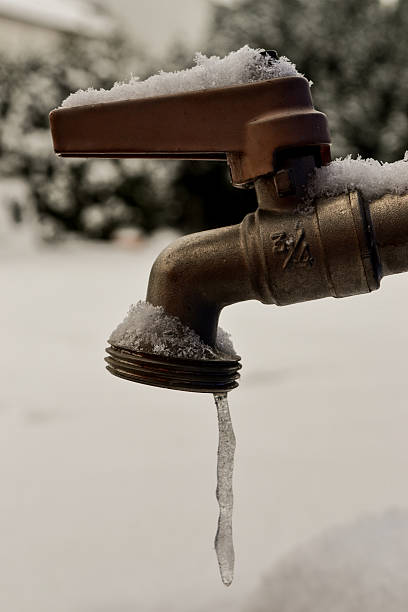Protecting Your Pipes from Cold Weather: Effective Strategies
Protecting Your Pipes from Cold Weather: Effective Strategies
Blog Article
Presented here down the page you can find more incredibly good additional info all about How To Avoid Freezing Pipes.

Winter can wreak havoc on your plumbing, specifically by freezing pipes. Here's how to avoid it from happening and what to do if it does.
Introduction
As temperatures drop, the threat of icy pipelines boosts, possibly resulting in expensive repair work and water damages. Comprehending how to prevent frozen pipelines is crucial for property owners in cool environments.
Avoidance Tips
Protecting prone pipelines
Wrap pipelines in insulation sleeves or use warmth tape to protect them from freezing temperatures. Concentrate on pipes in unheated or external locations of the home.
Heating strategies
Maintain indoor spaces appropriately warmed, specifically areas with plumbing. Open up cupboard doors to permit cozy air to distribute around pipes under sinks.
How to determine icy pipes
Try to find lowered water flow from faucets, uncommon smells or sounds from pipes, and visible frost on revealed pipes.
Long-Term Solutions
Structural adjustments
Think about rerouting pipelines away from exterior walls or unheated locations. Add additional insulation to attics, cellars, and crawl spaces.
Upgrading insulation
Buy high-grade insulation for pipelines, attic rooms, and walls. Appropriate insulation helps preserve constant temperature levels and lowers the risk of frozen pipelines.
Securing Outdoor Plumbing
Garden hose pipes and outside taps
Disconnect and drain garden pipes prior to winter season. Mount frost-proof spigots or cover exterior faucets with protected caps.
Recognizing Icy Pipes
What causes pipes to freeze?
Pipelines freeze when subjected to temperatures listed below 32 ° F (0 ° C) for extended periods. As water inside the pipelines ices up, it increases, taxing the pipeline walls and possibly triggering them to rupture.
Threats and problems
Frozen pipes can cause supply of water disturbances, building damages, and costly repairs. Ruptured pipelines can flood homes and create extensive architectural damages.
Indications of Frozen Piping
Identifying frozen pipelines early can prevent them from rupturing.
What to Do If Your Pipes Freeze
Immediate activities to take
If you think icy pipelines, maintain taps available to soothe stress as the ice melts. Utilize a hairdryer or towels soaked in warm water to thaw pipelines gradually.
Conclusion
Avoiding frozen pipes calls for aggressive procedures and fast feedbacks. By recognizing the reasons, indicators, and safety nets, property owners can secure their plumbing throughout winter.
5 Ways to Prevent Frozen Pipes
Drain Outdoor Faucets and Disconnect Hoses
First, close the shut-off valve that controls the flow of water in the pipe to your outdoor faucet. Then, head outside to disconnect and drain your hose and open the outdoor faucet to allow the water to completely drain out of the line. Turn off the faucet when done. Finally, head back to the shut-off valve and drain the remaining water inside the pipe into a bucket or container. Additionally, if you have a home irrigation system, you should consider hiring an expert to clear the system of water each year.
Insulate Pipes
One of the best and most cost-effective methods for preventing frozen water pipes is to wrap your pipes with insulation. This is especially important for areas in your home that aren’t exposed to heat, such as an attic. We suggest using foam sleeves, which can typically be found at your local hardware store.
Keep Heat Running at 65
Your pipes are located inside your walls, and the temperature there is much colder than the rest of the house. To prevent your pipes from freezing, The Insurance Information Institute suggests that you keep your home heated to at least 65 degrees, even when traveling. You may want to invest in smart devices that can keep an eye on the temperature in your home while you’re away.
Leave Water Dripping
Moving water — even a small trickle — can prevent ice from forming inside your pipes. When freezing temps are imminent, start a drip of water from all faucets that serve exposed pipes. Leaving a few faucets running will also help relieve pressure inside the pipes and help prevent a rupture if the water inside freezes.
Open Cupboard Doors
Warm your kitchen and bathroom pipes by opening cupboards and vanities. You should also leave your interior doors ajar to help warm air circulate evenly throughout your home.

Hopefully you enjoyed reading our topic about Winter Plumbing Precautions: Preventing Frozen Pipes. Many thanks for taking the time to browse our post. Remember to take the opportunity to distribute this blog post if you enjoyed reading it. Thank you so much for going through it.
Call Today Report this page